Wildlife On The Move
A wildebeest herd stampedes across the dusty plains of Maasai Mara National Reserve in Kenya. Every year, wildebeests travel some 1,800 miles across equatorial East Africa in a race toward rain and the green it engenders.
To the walrus, ice is life. An oxygen-breathing marine mammal, it relies on the ice as a place to rest, to give birth, to nurse and to migrate. And with global warming, the ice is disappearing. Their annual migration is becoming a race against time and distance, depth and disaster.
A zebra calf stays close to its mother for months, recognizing her by voice, smell and pattern of stripes.
Golden jellyfish of Palau receive their namesake color from algae-like, single-celled organisms named zooxanthellae, which live within jellyfish and provide it with the energy required for life. They follow the sun in a daily migration that feeds their passengers and ensures their own survival.
A male wandering albatross displays its 11-foot wingspan to a female on South Georgia Island. The courtship ritual renews their pair bond after months of roaming the Southern Ocean.
Bellowing elephant seal bulls - weighing up to four tons and as much as 15 feet long - are doing more than boasting. Their battles are often vicious, and opponents may be severely injured. The top winner becomes the colony's "beachmaster."
Spawning salmon dominate traffic in the Ozernaya River on the Kamchatka Peninsula, Russia.
Immense flocks of white pelicans funnel through the Mississippi Flyway every day during the birds' twice-yearly travels between wintering and breeding grounds.
A sperm whale pod with a large calf migrates offshore of the Azores Islands in the eastern Atlantic.
Plains zebras typically accompany the wildebeest - danger lurks if the big equines become separated from the herd.
An advancing white shark typically means doom for any large sea mammal it approaches, even for huge elephant seals off Guadalupe Island off Mexico's Pacific coast.
Rangeland fences are an omnipresent barrier to the pronghorn, which is not designed for leaping high. When it tries to squeeze under, it can be ensnared in a barbed wire death trap.
Dusk silhouettes a pronghorn at the Heart Mountain National Antelope Refuge in Oregon.
A proboscis monkey, her infant holding tightly, makes a flying leap in the Bornean forest.
Off the coast of western Australia, small fish cluster around a whale shark, using it as shelter from predators.
Mali elephants must travel in a perpetual migration across the arid Sahel region in search of food and water. Their yearly 300-mile trek is the longest known elephant migration. As the climate becomes more fickle and human demands on land and water increase, these desert nomads face an ever more uncertain fate.





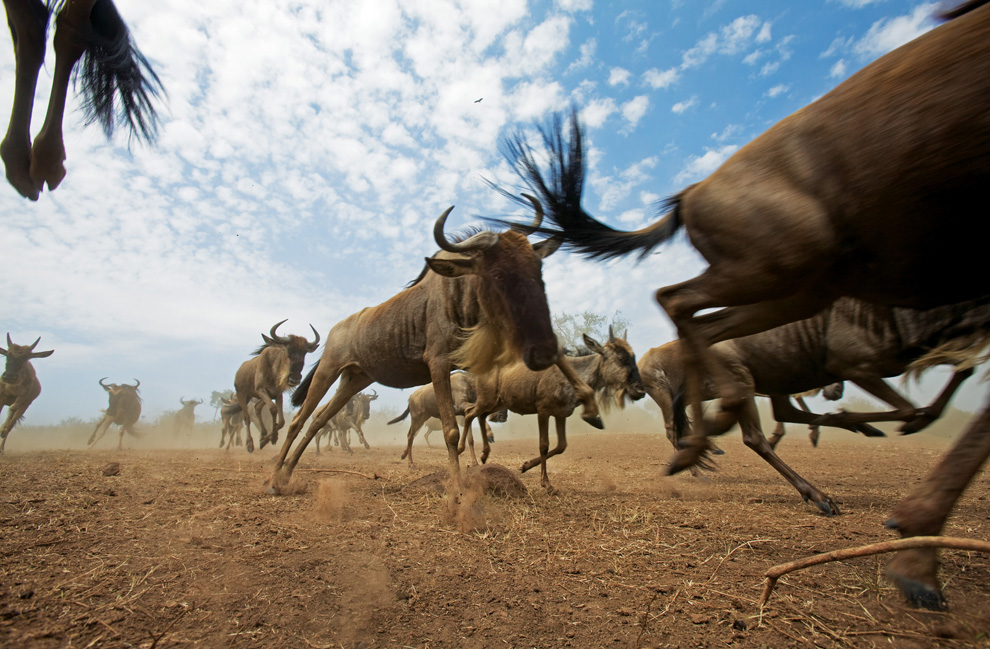

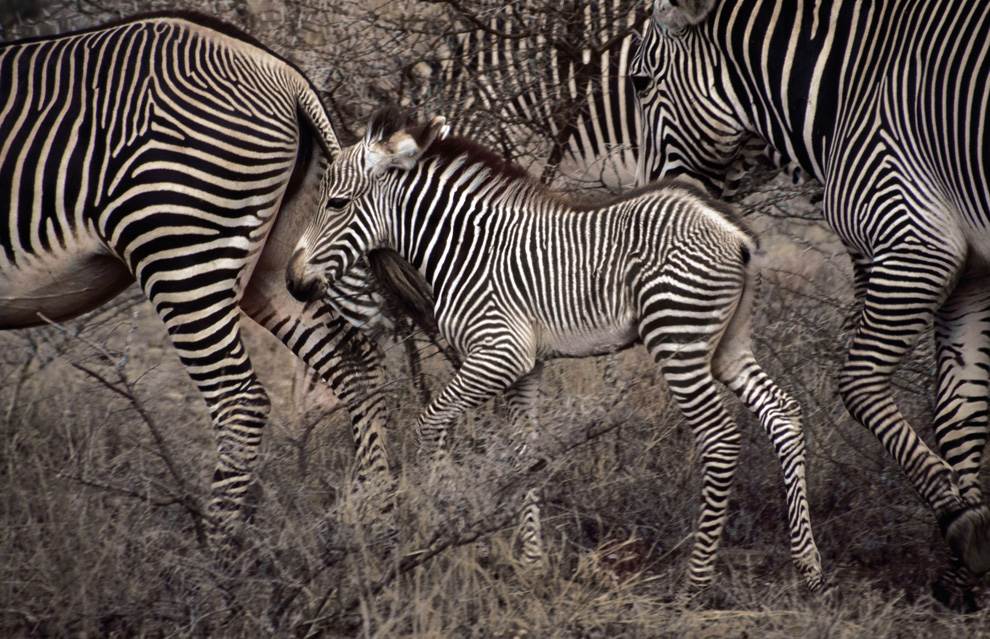
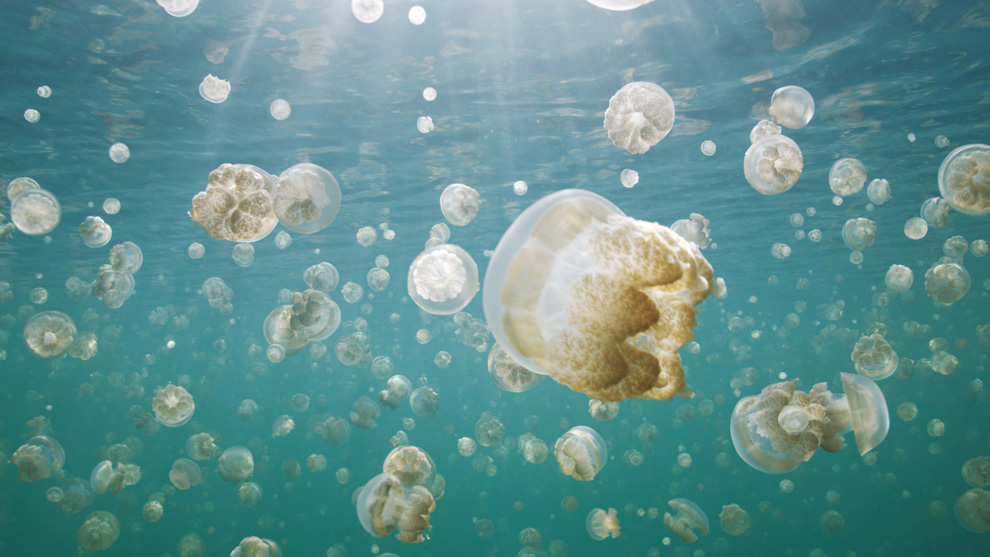
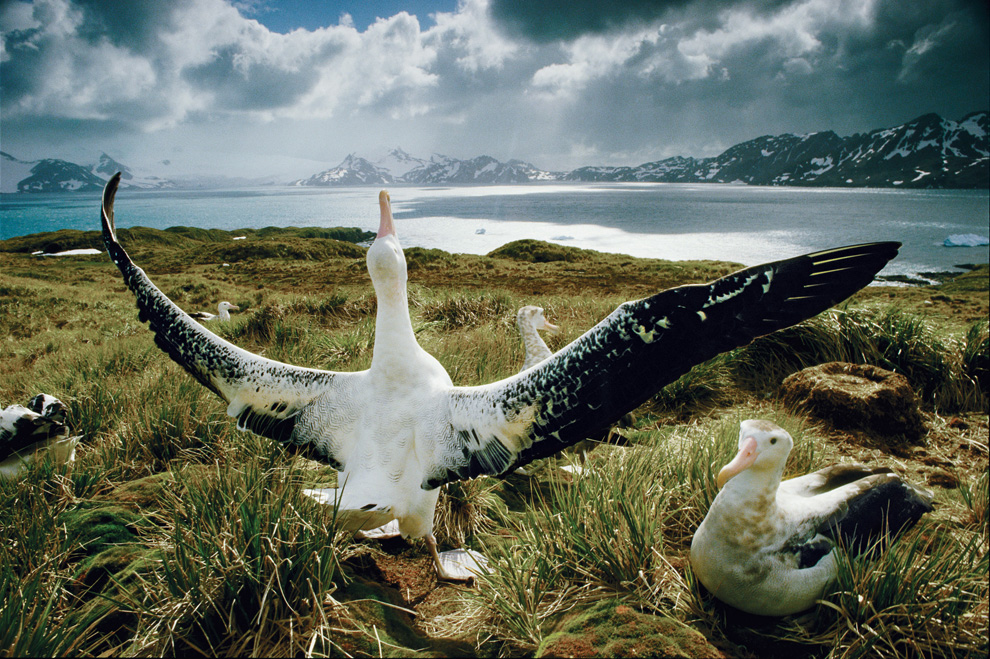
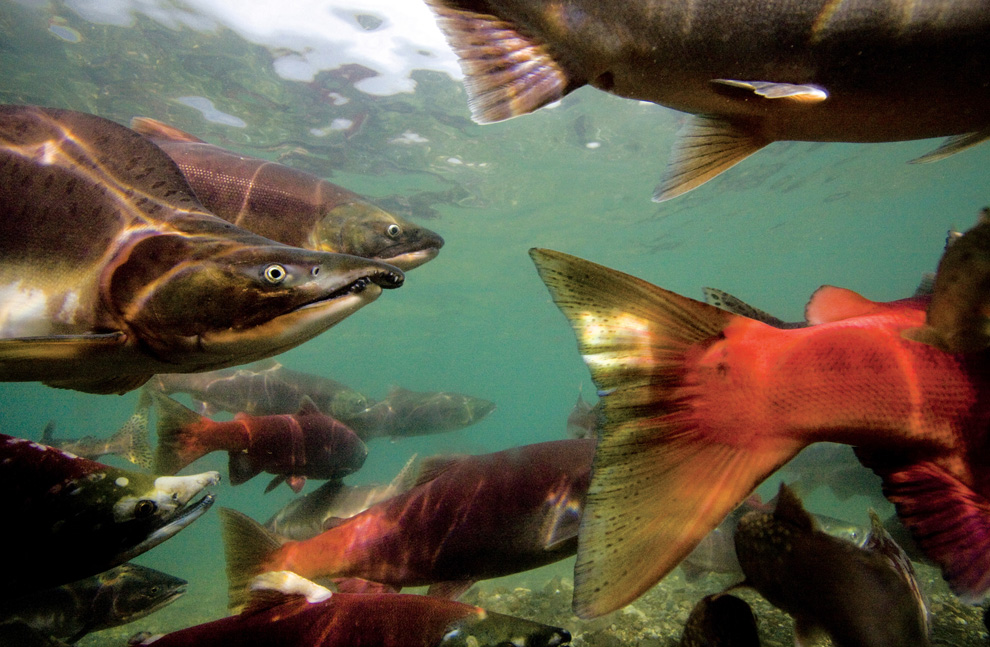
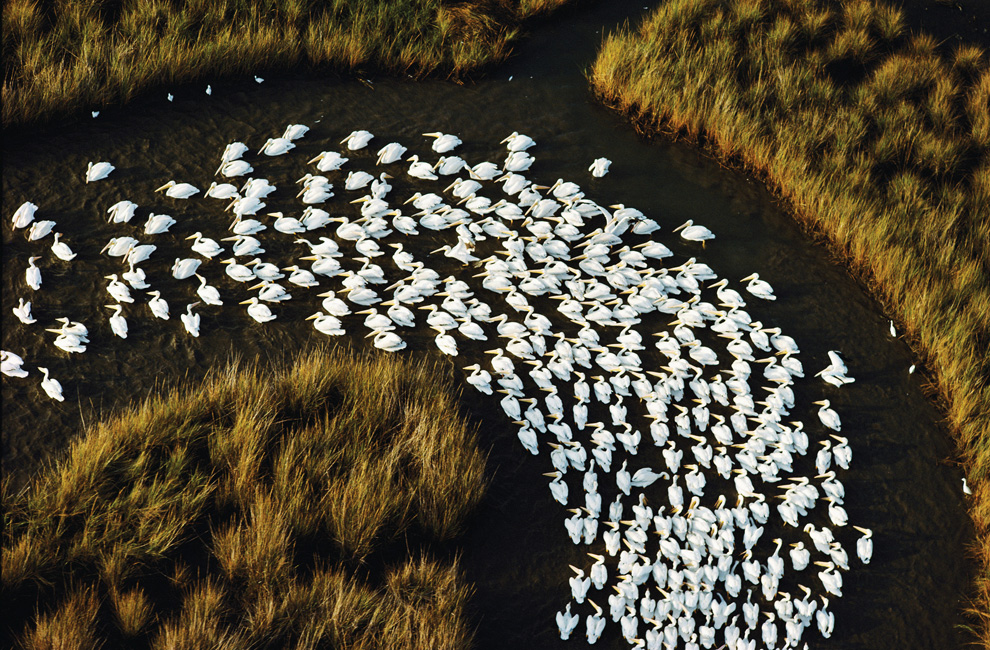
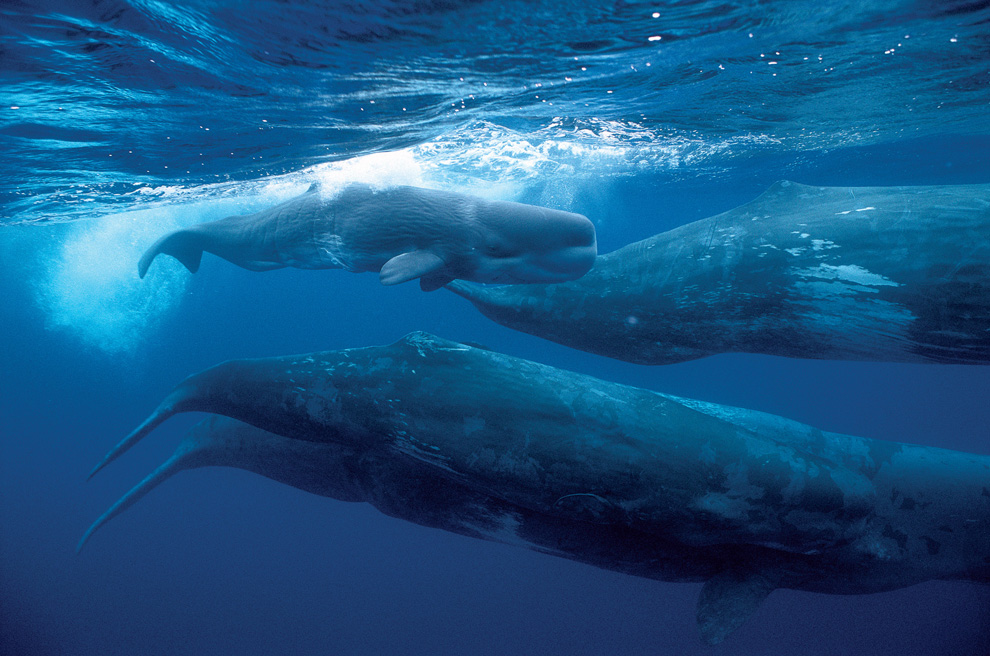
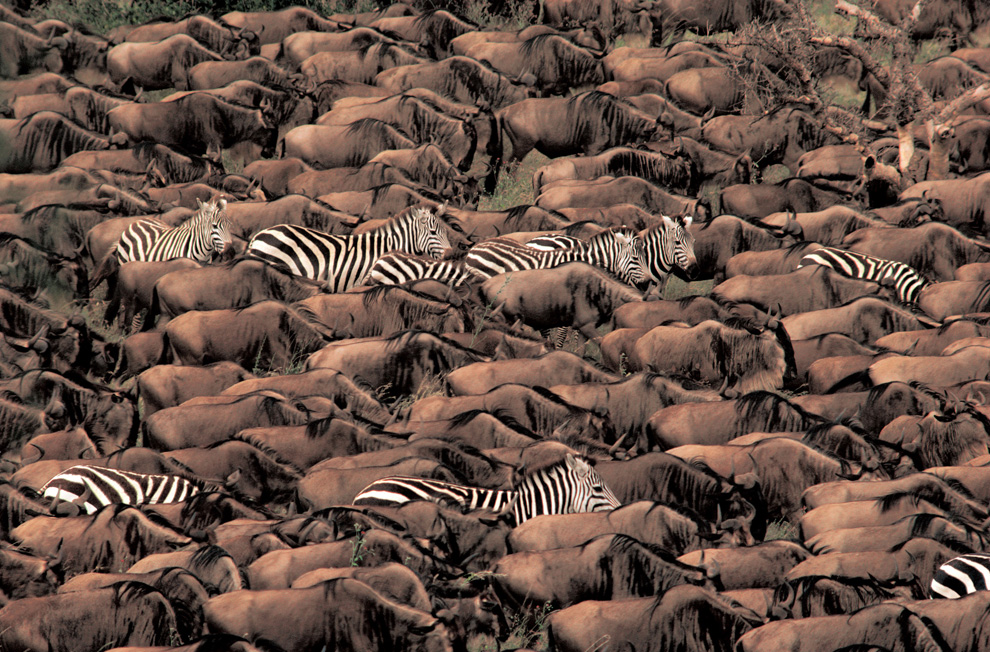

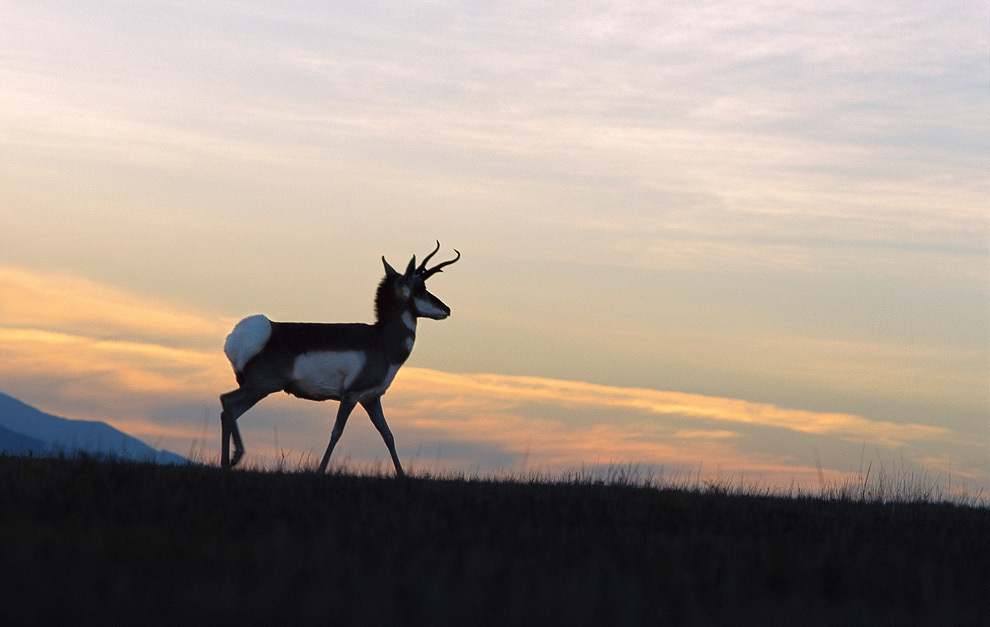
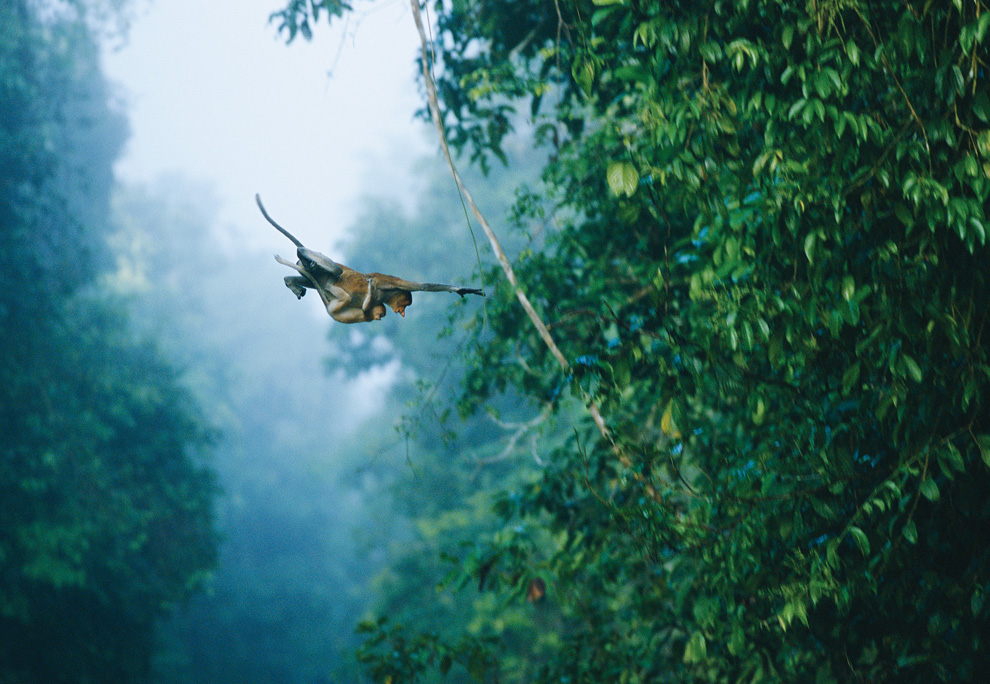
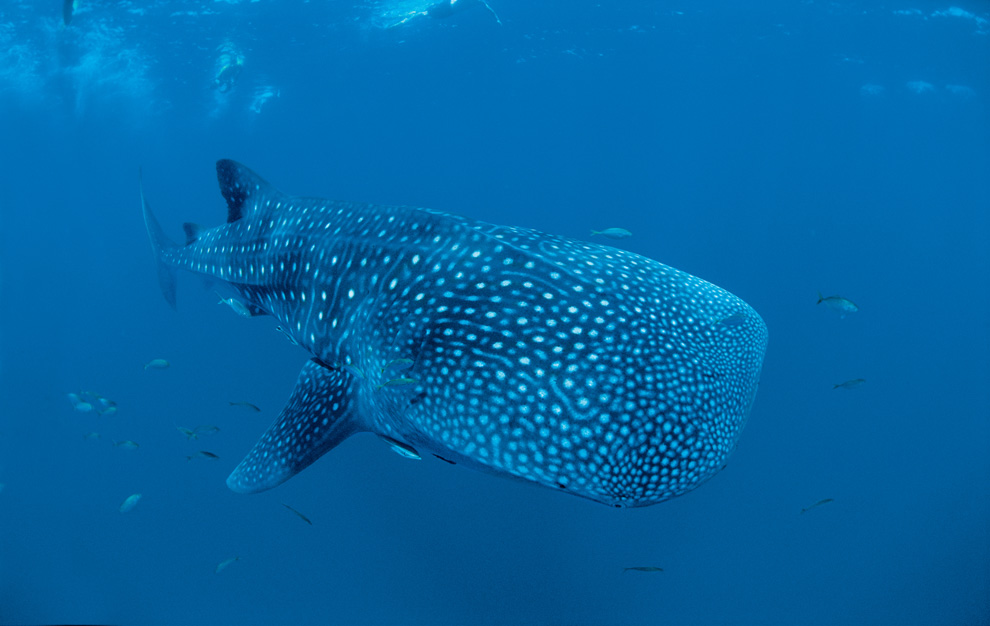

 رد مع اقتباس
رد مع اقتباس
